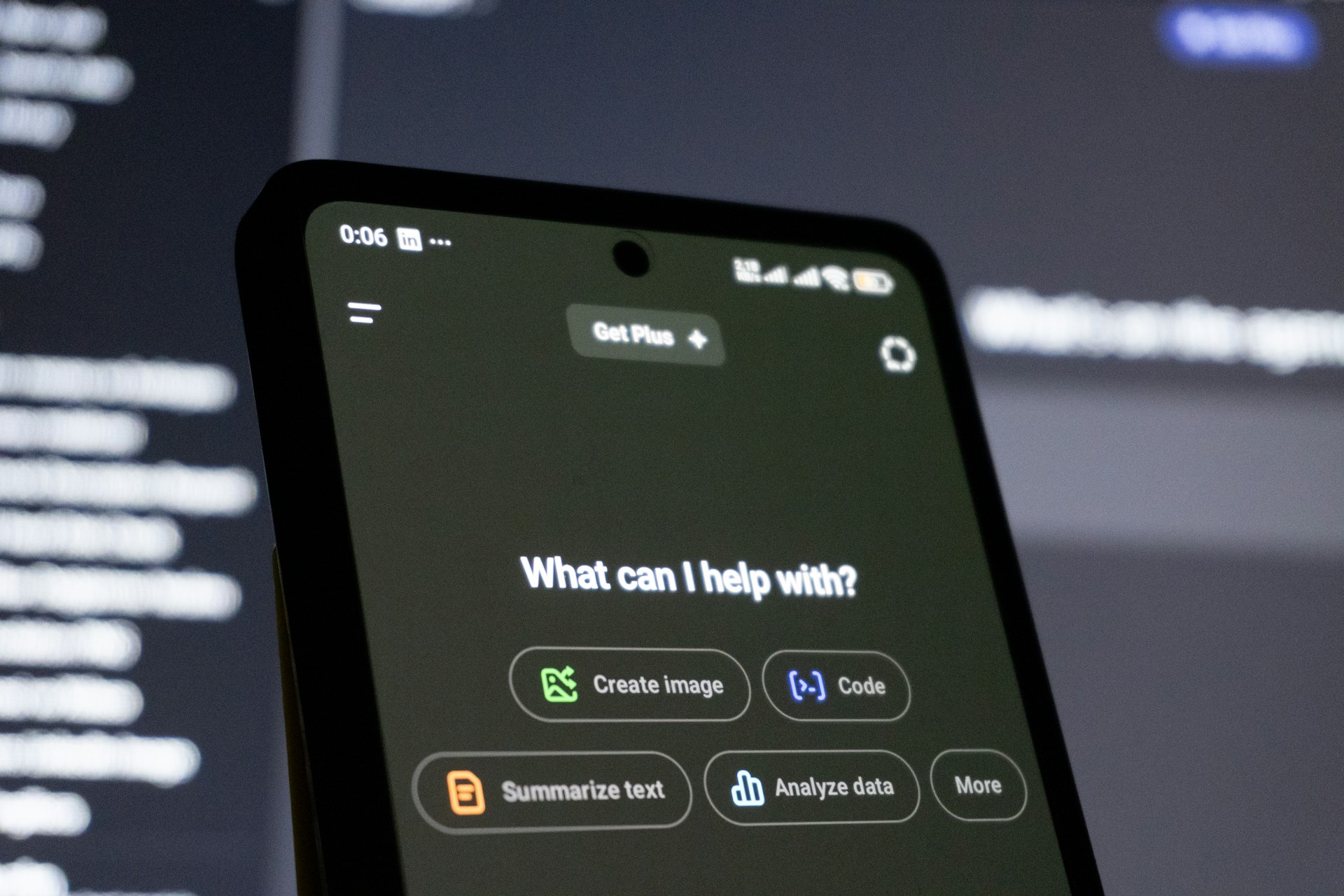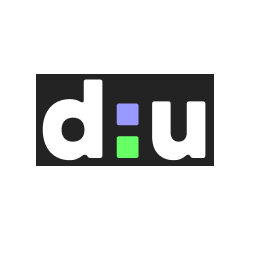AI market 2025 at a glance: Which AI is there and who is shaping which area?
 Download Article
Download ArticleThe AI market has developed rapidly in recent months. Every third company in Germany now uses AI technology — almost twice as many as a year ago. While ChatGPT dominated public perception for a long time, other AI models such as Anthropics Claude, Google's Gemini, Metas Llama, Mistral AI and specialized AI agents are now leading the market.
Our overview shows you who is a leader in which area, which artificial intelligence is available for which areas of application and what is really important when choosing. Not a complete list of all existing AI tools — that would simply be impossible given the speed of development. Instead, we provide guidance for your next step in using AI technologies.
The big platforms: Who dominates the market
Three names shape the AI market more than any others: OpenAI, Google and Amazon. They have created extensive ecosystems that have now become standard. Anyone who uses AI can hardly ignore them.
OpenAI and the Microsoft Ecosystem
OpenAI has practically defined the market for generative AI with ChatGPT and the GPT series. Integration with Microsoft products (Office, Teams, Azure) makes OpenAI technology the standard option, often without a conscious choice.
The strength lies in versatility — a GPT model can answer customer inquiries, write codes, translate texts and analyze data. The newer models, such as GPT-5 and the reasoning variants of the o series, show progress in complex problems and significantly improve natural language processing (NLP).
The disadvantages: Intensive use results in considerable costs. Companies are also becoming dependent on a US provider, and data protection issues remain unanswered when it comes to sensitive data.
Google Gemini and cloud integration
With Gemini and the Google cloud infrastructure, Google relies on a similar ecosystem. The integration with Workspace, Gmail and Google Docs makes it particularly interesting for companies that already work in the Google universe. Gemini Pro provides an extended context window that can process very long documents.
The advantages: Google has decades of experience with search algorithms, extensive training data and offers strong integration into its own services. The critical point, however, is that the business model is based on advertising and data collection. For European SMEs with strict data protection requirements, this can be a relevant factor.
Amazon AWS as an infrastructure backbone
Amazon dominates the infrastructure level with AWS. Many AI applications run on AWS servers, even if they don't come directly from Amazon. Amazon Bedrock provides access to various foundation models, and SageMaker provides tools for your own developments.
The scalability and reliability and the wide range of products offer several advantages. From a medium-sized company perspective, however, there are also significant weaknesses: the high level of complexity, which requires comprehensive IT expertise, and opaque cost structures.
Language models in everyday life: Who else counts besides ChatGPT
While the major platforms with broad ecosystems score points, interesting alternatives have developed in AI language models. OpenAI has had a strong influence on perception in recent years; in fact, other providers have now developed equivalent solutions.
Anthropic Claude: The Enterprise Alternative
Anthropic with Claude has established itself as an alternative — even more, Claude now dominates the corporate sector. Claude is considered particularly strong for longer texts, complex analyses and safety-critical applications.
The company values “Constitutional AI,” i.e. AI with inherent safety and ethics principles. Claude has become the preferred tool of many developers for code generation. The API integration enables flexible integrations, and Claude is also ideal for customer communication thanks to well-thought-out tonality controls.
Open-source models and digital sovereignty
Meta is pursuing an open-source strategy with Llama. The models can be downloaded, adapted and hosted by yourself. This means maximum control and data security, but also higher demands on in-house IT capacities. It is therefore an interesting option for medium-sized companies with their own IT and the need for digital sovereignty.
Mistral AI from France is positioning itself as a European alternative with a focus on efficiency and openness. The models are smaller and faster than those of the US competition, with often comparable quality. Mistral embodies the European approach — less big tech dominance, more control for users and GDPR-compliant from the ground up.
Enterprise-focused solutions
Cohere focuses on enterprise applications. Instead of consumer features, the focus is on document analysis, customer service and internal search. The AI applications are specifically optimized for corporate environments, with a focus on security and compliance.
The first glance shows that the range of AI models is wide and the selection options are varied. That is precisely why dialogue with other decision makers is valuable and important. We offer this on Data Unplugged Festival, where you can exchange ideas with other medium-sized companies about specific practical examples. In master classes, tool applications are presented and can be implemented and applied directly.

Specialized AI: Where niche players dominate
In addition to universal language models, there is a second trend: highly specialized AI solutions. While big platforms try to do it all, there are providers who are leaders in specific areas — often with better results than generalists.
Translation: DeepL as a quality standard
DeepL has revolutionized the translation industry. The quality surpasses Google Translate, particularly for European languages. DeepL has therefore become the standard for internationally active SMEs, for example for individual translations and integration into content management systems, e-commerce platforms or customer service tools.
Image generation: variety for different requirements
In the area of AI image generators, Midjourney dominates artistically sophisticated visualizations. The characteristic cinematic aesthetic often makes AI the first choice for marketing visuals.
With Stable Diffusion, Stability AI provides open-source flexibility with deep control. Adobe Firefly integrates AI image generation directly into Creative Suite. DALL-E 3 from OpenAI, fully integrated into ChatGPT, offers particularly intuitive operation through natural language processing.
Video and audio: The next generation of content
Runway, Synthesia, and Descript are leading the way for video editing. Runway enables professional video editing with AI support. Synthesia creates videos using AI avatars, useful for training videos or multilingual content. Descript combines transcription, editing, and AI-based audio enhancement.
Code assistants for developers
In the code area, GitHub Copilot dominates. Alternatives such as Tabnine, Codeium, or Amazon CodeWhisperer offer similar functionality, often with better integration into specific development environments.
Business intelligence and data analysis
For data analysis and business intelligence, specialized tools such as ThoughtSpot, Tableau, or Power BI use machine learning to identify patterns, report anomalies, and make predictions.
European players: digital sovereignty in practice
A third important segment is developing between the US-dominated platforms and specialized niche players: European AI providers. The question “What artificial intelligence is there from Europe?” touches on issues such as data protection, independence from US technology, and strategic autonomy.
Aleph Alpha: Germany's answer to OpenAI
Aleph Alpha from Germany develops language models with a focus on security, transparency and European values. The Luminous models work in multiple languages, are designed to comply with GDPR from the ground up and can be operated in your own data center.
For authorities, critical infrastructures and security-conscious companies, this represents an important alternative, as data remains in Europe and there is a certain degree of transparency about training sources. The challenge, however, is that the models are smaller than the US competition and require higher costs for comparable functions.
Mistral AI: French efficiency
Mistral AI from France represents the European path in AI development. The company consistently follows an open-source approach, works transparently and develops efficient models that deliberately do not require vendor lock-in. The focus is on the interests of users, not on ties to proprietary platforms. Mistral combines technical performance with European values such as data sovereignty and transparency.
The European AI ecosystem
Other relevant European initiatives include national AI labs in the Netherlands, Scandinavia and Switzerland. None have the market power of US companies, but together they form an ecosystem that offers alternatives.
According to the survey, the country of origin of the AI provider is important for 88 percent of the German companies surveyed. 93 percent would prefer an AI solution from Germany. This shows that digital sovereignty is not a theoretical concept, but a concrete need. Our guests report this time and again at d:u podcast.
Industry-specific AI: solutions for specific use cases
In parallel with universal and specialized tools, a fourth segment is developing: industry-specific AI. These solutions are significantly better suited to specific applications than generalists.
Healthcare: Accuracy and Compliance
- Vendors such as Tempus, PathAI, and Ada Health use machine learning for diagnostic support, drug development, and patient management.
- Specialized training and strict compliance requirements are crucial here.
Manufacturing and Industry 4.0
- Solutions such as Uptake and C3 AI offer predictive maintenance.
- Siemens with MindSphere and SAP with Leonardo integrate AI into established industrial platforms.
Financial sector: safety and regulation
- Providers such as Kensho and DataRobot focus on fraud detection, risk assessment and automated advice.
- Strict compliance requirements characterize the use.
Retail and e-commerce
- Recommendation engines and AI chatbots dominate.
- Shopify integrates AI directly, Salesforce provides CRM AI, Nosto focuses on personalization.
Logistics and supply chain
- Tools from Blue Yonder and o9 Solutions optimize supply chains, predict demand, and plan routes.
From our experience working with decision makers, we know that companies achieve the best results when they combine industry-specific solutions with universal platforms instead of relying on a single provider.
AI agents and autonomous assistants: The trend that is changing everything
There is a central trend across all areas of AI application: the transition from reactive AI chatbots to proactive AI agents who plan, coordinate and act independently.
What are AI agents?
AI agents are advanced, AI-powered systems that go far beyond simple answers. They can automate complex tasks in everyday work and work on their own responsibility, such as organizing meetings, managing e-mail mailboxes, managing software applications, or coordinating projects.
Examples of AI agents
Examples include OpenAI Operator, Anthropic Computer Use, and Google Jarvis, which already enable autonomous web and computer control, even though they are not yet fully developed. These agents often use AI technologies with multi-modal web access to process information from various sources, including PDF files and cloud-based systems.
Capabilities and benefits of AI agents
They can independently make decisions, set priorities and optimize processes, which significantly drives forward the automation of routine tasks and relieves employees. The AI agents act proactively and thus help to make complex processes more efficient.
For further insights into specific areas of responsibility and how AI agents can be integrated into everyday working life, visit the data:unplugged festival.

What is important when choosing: Decision criteria
With all of these options — from large platforms to specialized tools to AI agents — the question is which AI tools are relevant to you. The answer is closely linked to your specific requirements.
Use case before technology: The selection should be based on the specific problem, not on the technology. Define the requirements and then evaluate the appropriate solution.
Data protection and compliance: For European SMEs, this is often a decisive criterion. Questions about data processing, GDPR compliance and server locations are relevant. Cloud-based US solutions often offer more functionality, but local alternatives may be preferable for compliance reasons.
Integration into existing systems: The most powerful AI remains ineffective without integration into the existing IT landscape. The availability of interfaces, APIs, and compatibility with ERP or CRM systems are crucial.
Cost and scalability: Pay-per-use models allow low entry costs, but can be expensive when used intensively. Fixed cost models require higher initial investments, but often offer better predictability in the long term.
Support and customization options: Standard solutions can be implemented quickly, but may not cover all specific requirements. Customizing options and quality of support are relevant.
Future security: The rapid development of the market should take into account active development, regular updates and financial stability of the provider.
Lock-in risk: The degree of dependency on a provider should be evaluated. Open source solutions or standardized interfaces reduce the risk of long-term commitment.
The AI market: consolidation and specialization
Two parallel developments are shaping the market: consolidation of large platforms and increasing specialization in niches.
The big three, OpenAI/Microsoft, Google and Amazon, are becoming more dominant as a result of integration into established ecosystems and massive investments. At the same time, specialized providers are growing in their niches. DeepL for translations, midjourney for image generation, industry solutions for medicine, logistics or finance. This specialization brings better quality in defined applications.
European players are fighting for relevance, not because of technological weakness, but because of lower investments. However, they are becoming more important for regulated industries and companies with high data protection requirements. Open-source models such as Llama, Mistral, and Stable Diffusion show that AI doesn't have to be proprietary. AI agents are evolving from concept to reality, and the vision of autonomous assistants is becoming increasingly practical.
Conclusion: From overview to strategy
The current AI market is characterized by accelerated differentiation. Anthropic dominates the corporate sector, reasoning models expand problem-solving capabilities, AI agents are becoming practical helpers. At the same time, European providers offer privacy-compliant alternatives, while specialized tools often outperform generalists in their niches.
The strategic challenge is to identify relevant options from this variety, based on specific use cases and practical usability in everyday working life. The ability to integrate, specialize and long-term sustainability mean more than marketing promises.
Find out how and which AI technology other SMEs have integrated into their processes at data:unplugged festival 2026 on March 26 & 27 in Münster. Here, companies from industry, trade, production and logistics share their implemented use cases — from finance to marketing, from IT to legal. At the SME Stage and a further four stages, space is created for deep exchange on well-founded practical examples.
For effective AI implementation, it is crucial to involve, train and positively prepare all areas of your company for deployment. data:unplugged stands for a broad and well-founded transfer of knowledge — from which entire business teams benefit. Get a ticket for yourself and your core team now!
Weitere Blogs
MCC Halle Münsterland





